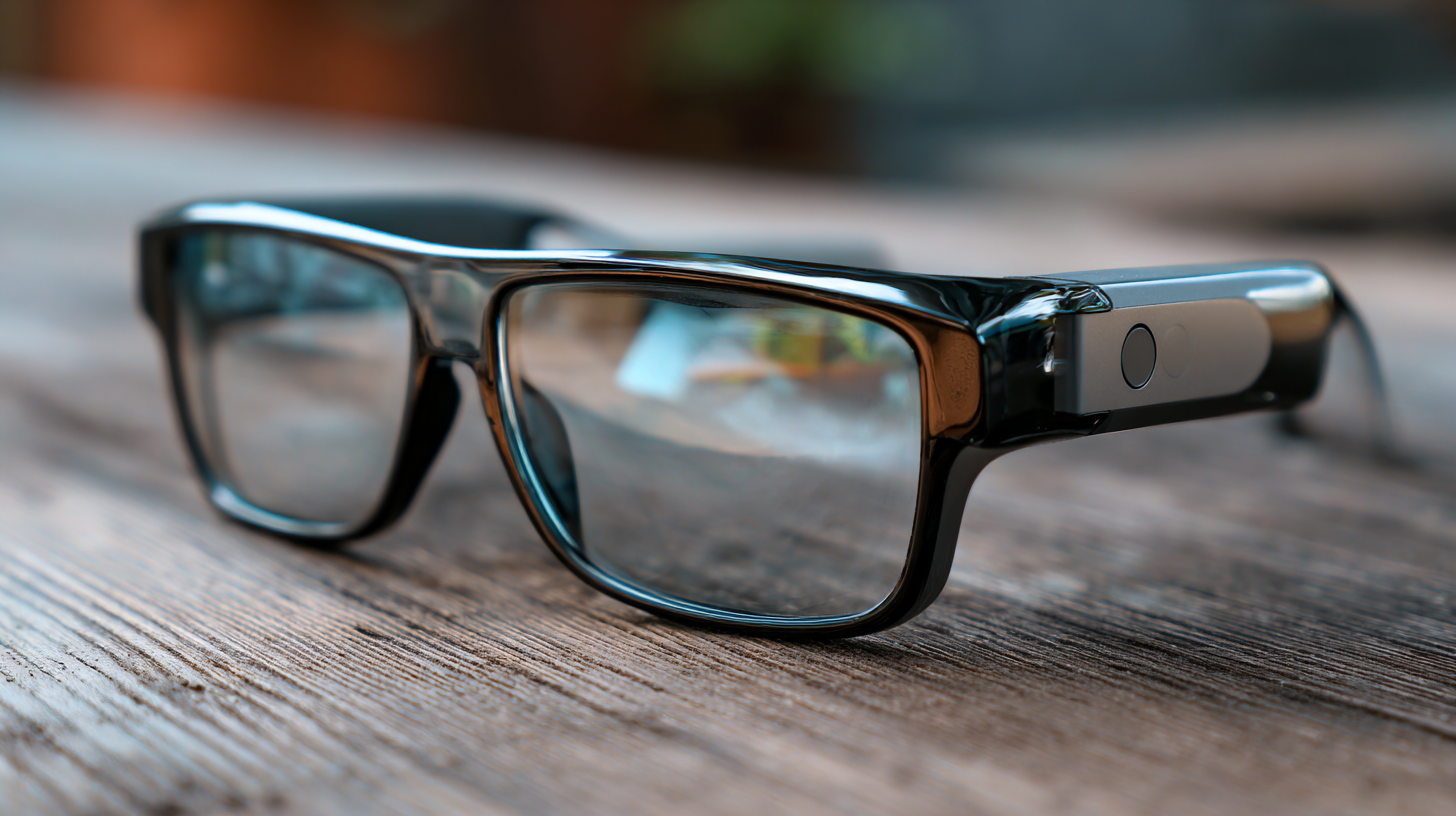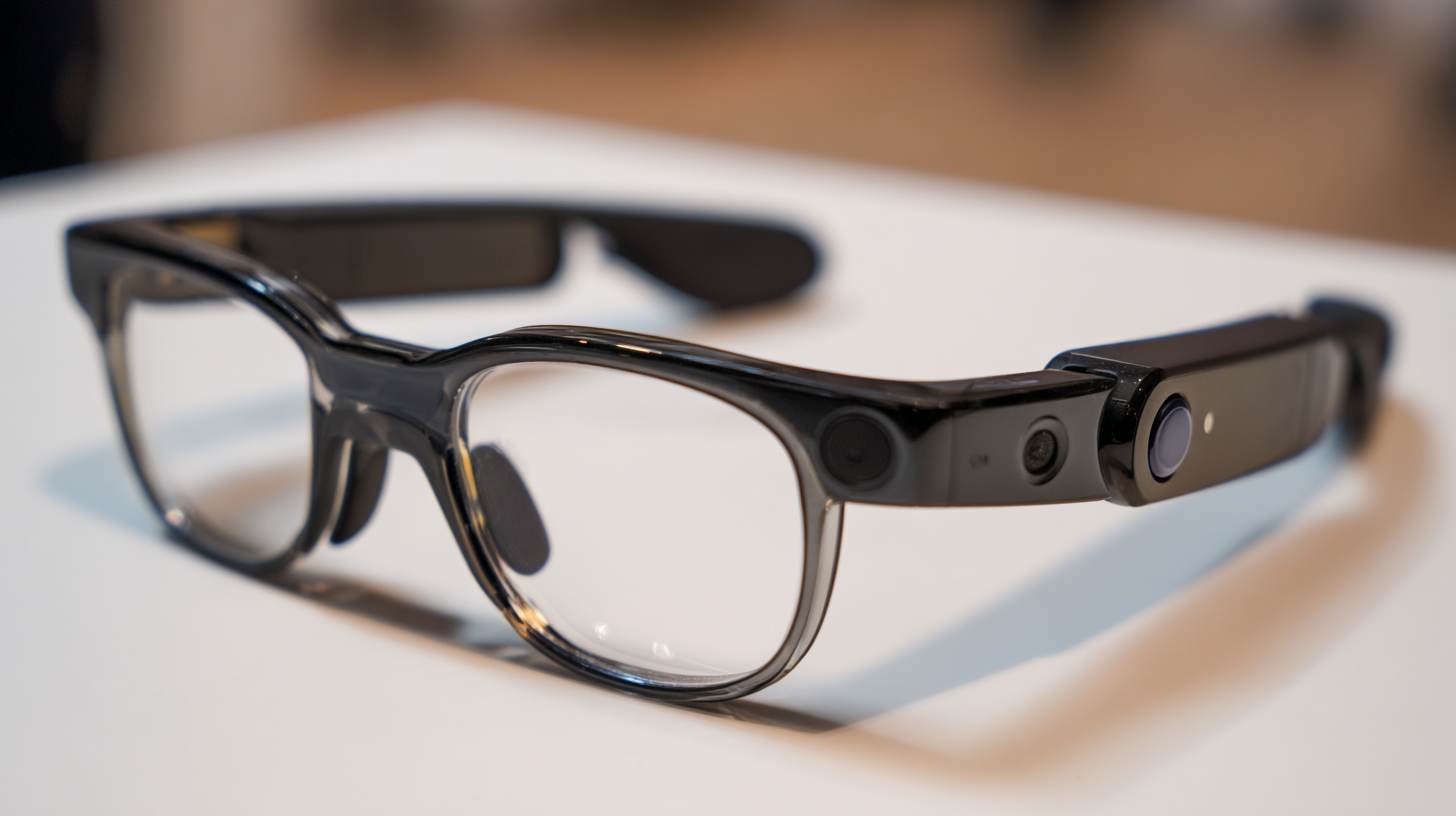 +86-13613020876
+86-13613020876



In recent years, the demand for innovative audio-visual devices has surged, particularly in the realm of "Glasses With Speakers." According to a report by Grand View Research, the global smart glasses market is projected to reach $60 billion by 2025, reflecting a growing consumer interest in multifunctional wearable technology. These glasses not only enhance visual experiences but also integrate audio capabilities, allowing users to enjoy music, podcasts, and calls seamlessly. Yet, maximizing user experience with these devices requires thoughtful design and strategic implementation. As consumer expectations evolve, brands must prioritize comfort, sound quality, and usability to stand out in this competitive market. This blog will explore the top strategies for enhancing user experience with glasses equipped with speakers, ensuring that both functionality and comfort are at the forefront of innovation.

Glasses with built-in speakers offer a unique blend of visual and auditory experiences that enhance everyday activities. According to a report by Grand View Research, the global market for smart glasses is projected to reach $29.8 billion by 2025, indicating a growing interest in multifunctional eyewear. These innovative devices allow users to enjoy music, take calls, and access notifications without needing to reach for their smartphones, promoting a seamless lifestyle.
When incorporating glasses with speakers into your daily routine, consider these tips. First, ensure that the fit of the glasses is comfortable, as prolonged use can lead to discomfort. Opt for lightweight materials that provide adequate stability without applying too much pressure on the nose or ears.
Secondly, pay attention to the sound quality and volume levels; select models that offer adjustable settings to cater to various environments, whether you’re in a busy café or a quiet library. Leveraging these features can significantly enhance user experience, aligning with preferences identified in a recent study by IHS Markit, which found that 70% of consumers prioritize sound quality in wearable technology.
Additionally, integrating voice assistant capabilities can take convenience to the next level. By facilitating hands-free control, users can manage tasks while keeping their hands free for other activities. This feature not only boosts efficiency but also aligns with the increasing demand for smart technology integration in personal accessories, as highlighted in a report by Statista, which shows that 54% of consumers are interested in voice-activated devices.
When considering sound quality, glasses with speakers offer a unique alternative to traditional earbuds. While earbuds deliver sound directly into the ear canal, glasses speakers create a more ambient audio experience by projecting sound into the environment. This design allows users to remain aware of their surroundings, making them a safer option for outdoor activities. However, the trade-off may involve a reduction in bass response and overall clarity compared to earbuds, which are designed to isolate sound.
Tip: When choosing between glasses with speakers and traditional earbuds, consider your listening environment. If you’re enjoying music alone at home, earbuds may provide a richer sound. Conversely, glasses with speakers are ideal for multitasking, such as walking or biking, while still enjoying your favorite tunes.
Another factor to take into account is comfort and convenience. Glasses with speakers can be less obtrusive, eliminating the need to insert something into your ear, which can be uncomfortable for extended periods. Additionally, many models come with integrated controls, providing quick access to adjust volume or answer calls without fumbling for your phone.
Tip: When testing glasses with speakers, ensure a proper fit and check for audio quality by trying them with different genres of music. This will give you a better sense of their performance capabilities in various scenarios.
 The design of adjustable glasses plays a crucial role in maximizing user experience, especially for those seeking both comfort and functionality. A recent evaluation descriptor known as the "glasses fit score" offers a structured approach to assess how well glasses can align with individual vision needs. This score encompasses various metrics, including alignment and design scores, providing valuable insights into how different styles and adjustments can enhance user satisfaction.
With the rise of innovative products like EZ Vision Pro, which are engineered to meet personalized vision requirements, consumers can now find economical solutions that adapt seamlessly to their lifestyles.
The design of adjustable glasses plays a crucial role in maximizing user experience, especially for those seeking both comfort and functionality. A recent evaluation descriptor known as the "glasses fit score" offers a structured approach to assess how well glasses can align with individual vision needs. This score encompasses various metrics, including alignment and design scores, providing valuable insights into how different styles and adjustments can enhance user satisfaction.
With the rise of innovative products like EZ Vision Pro, which are engineered to meet personalized vision requirements, consumers can now find economical solutions that adapt seamlessly to their lifestyles.
Comfort and fit are paramount when it comes to wearing glasses with speakers or other advanced features. Poorly fitting glasses can lead to discomfort and distraction, detracting from the overall user experience. The ability to customize these glasses not only addresses visual needs but also enhances the acoustic experience offered by built-in speakers. As manufacturers continue to innovate in design, understanding the psychological dimensions behind user preferences becomes increasingly important. By evaluating factors such as usability and comfort, brands can ensure that their products not only meet practical demands but also align with consumer expectations for an enjoyable and immersive experience.
When evaluating glasses with integrated audio features, one of the most critical aspects for consumers is battery life. According to a recent report by ACSI (American Customer Satisfaction Index), users rank battery longevity as a top priority when choosing wearable tech. Many current models offer around 4 to 8 hours of active playtime, which could be limiting for users who intend to use them throughout the day. For example, models like the Bose Frames feature a notable 12-hour battery life, placing them at a competitive advantage in consumer satisfaction.

Beyond the hours of use, the charging efficiency and design also significantly impact user experience. As noted in a survey by NPD Group, 67% of users expressed frustration with longer charging times, emphasizing the need for quick recharge capabilities. Technologies such as fast charging and energy-saving modes can enhance user satisfaction. Manufacturers that prioritize these features will likely see an upswing in their user base, as consumers demand devices that seamlessly integrate into their lifestyles without the constant need for charging. Thus, understanding and improving battery longevity can play a pivotal role in maximizing the overall user experience for glasses with speakers.
Glasses with speakers are redefining the way we interact with our environment, marrying utility with experience in everyday situations. Imagine walking through a bustling city, navigating your route while seamlessly enjoying your favorite playlist or responding to messages without ever needing to pull out your phone. This integration not only enhances convenience but also allows users to stay connected while immersing themselves in their surroundings.
In social settings, these tech-enabled glasses can transform gatherings by allowing users to listen to audio without disturbing others. Picture a picnic where one person is streaming an audiobook while the rest enjoy conversations. Furthermore, in professional environments, such as during presentations or collaborative meetings, glasses with speakers can facilitate discreet communication of vital information or notes, ensuring that users stay in the loop without interrupting the flow of dialogue.
This innovative technology not only enriches the user experience but also fosters a new level of interaction in various settings, illustrating the potential of blending wearables with communicative audio solutions.






